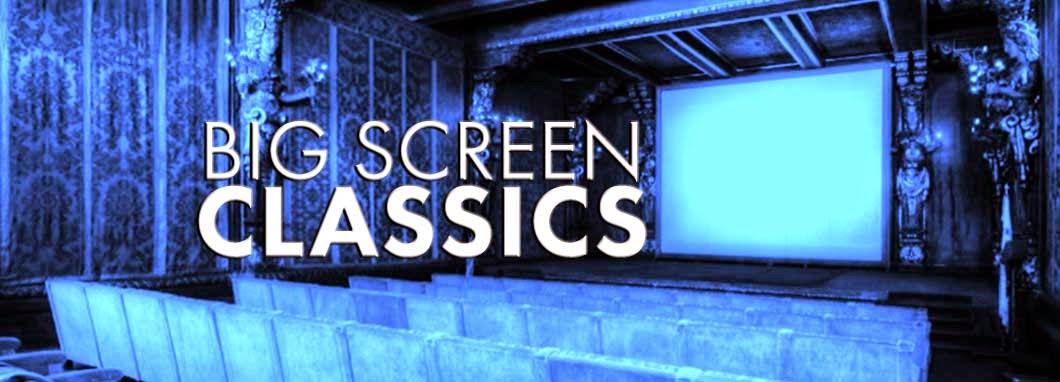Saved from near-oblivion by the 3-D Film Archive, the science fiction favorite GOG gets a new lease on life via this stunning 3-D Blu-ray from Kino Lorber Studio Classics
GOG Blu-ray 3D specifications
GOG Blu-ray 3D specifications
Distributed By: Kino Lorber Studio Classics
Video Resolution: 1080p high definition
Presented in original theatrical 3-D or alternate 2-D
Aspect Ratio: 1.66:1 widescreen
Audio: DTS-HD MA 2.0 (mono)
Feature Running Time: 85 minutes
Blu-ray street date: 03/1/2016
srp: $34.95
Blu-ray provided for review courtesy of the 3-D Film Archive
(GOG, 1954, directed by Herbert L. Strock, written by Tom Taggart and Richard G. Taylor from a story by Ivan Tors, produced by Ivan Tors, photographed in color & Natural Vision 3-D by Lothrop B. Worth, 1.66:1 aspect ratio, music by Harry Sukman; starring Richard Egan, Constance Dowling, Herbert Marshall, John Wengraf, Philip Van Zandt, Michael Fox, William Schallert; theatrically released by United Artists)
Studio Synopsis
In a remote, underground research laboratory two scientists, engaged in space travel research, are frozen to death in a cold chamber when their instruments comes under the control of an unknown power. A security agent, Dr. David Sheppard (Richard Egan, The 300 Spartans) arrives at the secret space research base, home of two experimental robots to investigate the possible sabotage. Early in his investigation, Sheppard finds that the underground laboratory under the control of the Supercomputer NOVAC and experimental robots GOG and MAGOG. Herbert L. Strock (The Crawling Hand) directed this Sci-Fi/Horror classic with a stellar cast that includes Constance Dowling (Black Angel), Herbert Marshall (The Letter) and William Schallert (TV's "The Patty Duke Show").
About the film
Fans of early 1950's science fiction films are in for a treat with this new Blu-ray release of Gog, the third in producer Ivan Tors' OSI Trilogy (The Office of Scientific Investigation): The Magnetic Monster (1951), Riders to the Stars (1953), and Gog (1954). The trilogy presented hard science fiction ideas in an entertaining - and occasionally juvenile - manner, surrounded by laboratory equipment, stoic leading men, lots of exposition, and colorful action. Gog is the culmination of the trilogy, telling its story of an underground space exploration lab besieged by unexplained sabotage. Is it caused by the Commies or an alien invasion? In 1954, you paid your 49 cents on a Saturday afternoon matinee and waited to find out. But unless you were in one of five California theaters, you didn't get to see Gog in its intended 3-D form. Its dimensional release was severely curtailed by distributor United Artists as it was coming at the very end of the 3-D craze.
Featuring an intriguing circular multi-level lab - which must have inspired the very similar design in Michael Crichton's novel and film of The Andromeda Strain - Gog was still a visual treat even in 2-D, color & widescreen and was fondly remembered by science fiction fans. Those fans were ill-served by the the film's television distribution where the majority of the prints were converted to black & white. During the DVD era, MGM released it via their manufacture-on-demand service, but again in only full-frame open-matte 2-D (harming the intended widescreen compositions) and from an element that had seen better days. For years, there didn't seem to be any hope to ever see the film again in 3-D. But that's where the story takes a happy turn and things get interesting.
About the Blu-ray & Restoration
As described in the Restoration Featurette on the disc, Gog was lost in its 3-D version for many years as the studio only maintained materials for the "right eye"; remember that 3-D movies contain two separate images: a "left eye" and a "right eye". The 3-D Film Archive tracked down the last surviving left eye print - in a totally faded-to-pink condition - nearly five decades later. Working in cooperation with MGM (who now owns the film) and supported by Kino Lorber, Bob Furmanek and Greg Kintz of the Archive began a months-long restoration to bring the film back to 3-D life for a Blu-ray release. Using numerous proprietary techniques, the Archive was able to return color to the left eye and then do a painstaking shot-by-shot matching of the color, image alignment, and cleanup of debris on the left and right prints. The result is an outstanding 3-D presentation on the Blu-ray. I was been lucky enough to see the original 3-D print a number of years ago in dual-projection polarized 35mm and this version gives a far better representation of the original film. The full story is told in the restoration featurette on the Blu-ray and on the Archive's website.
 |
| Lobby Card image courtesy of the 3-D Film Archive |
For fans of vintage 3-D, you can't go wrong with GOG. Highly recommended - buy it now.
Here is a brief peek at the restoration (the full version of the Restoration Featurette is on the Blu-ray; as an added bonus this short is filmed and presented in 3-D):
The original trailer (unrestored version):
For even more information on Gog, visit the 3-D Film Archive website.
Reviewed via a Vivitek DLP 1080p 3-D projector (ISF calibrated), EstarAmerica DLP-Link glasses, custom acoustically-transparent screen (100" diagonal), Sony Blu-ray player, Denon receiver, Paradigm speakers.



